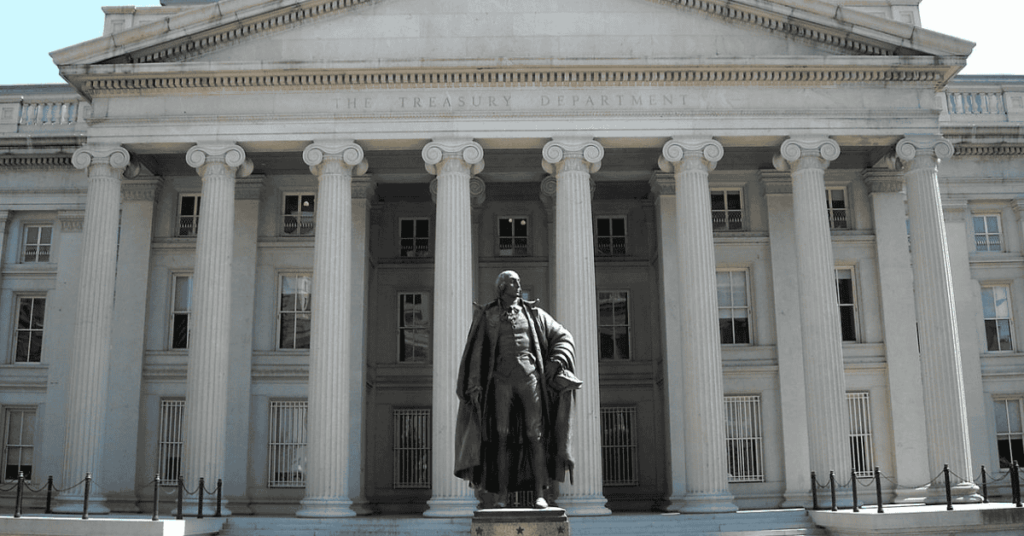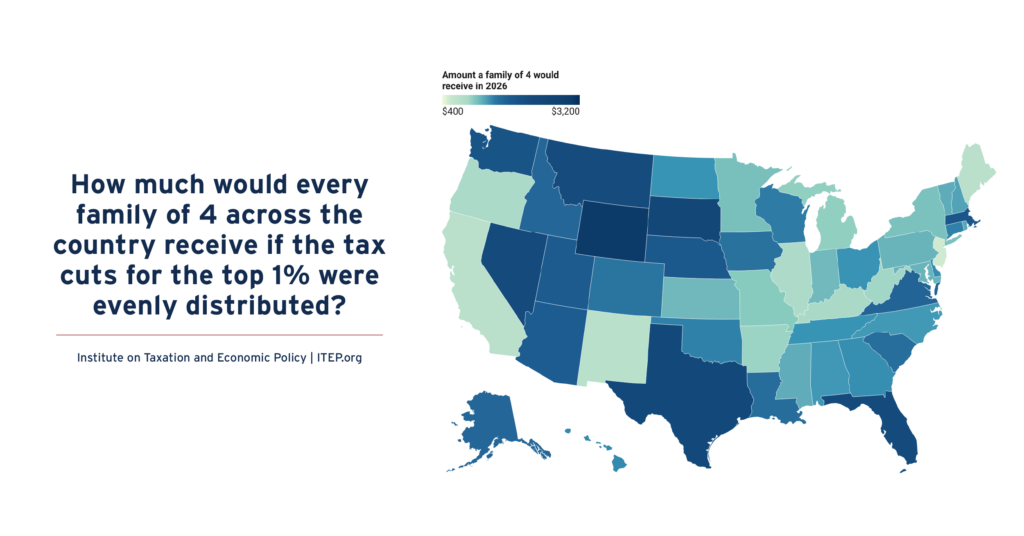 Over the next few weeks we will be blogging about what we’re watching in state tax policy during 2017 legislative sessions. In this “What to Watch in the States” series, we will look at the following:
Over the next few weeks we will be blogging about what we’re watching in state tax policy during 2017 legislative sessions. In this “What to Watch in the States” series, we will look at the following:
- State responses to short- and long-term revenue deficits
- Boosting funding for infrastructure, though sometimes at the expense of other public services
- Proposed measures that weaken or eliminate income taxes
- Efforts to modernize sales taxes to reflect 21st century economy
- State anticipation of and reaction to potential federal tax policy changes
- Tax breaks for working families
We start the series by contextualizing the current fiscal and budgetary climates in the states.
Deficits Abound: Why All This Trouble?
More than 30 states are facing short- or long-term revenue deficits, putting pressure on legislatures across the country to find ways to plug budget holes.
The last time this many states faced deficits was during the Great Recession. In 2017, shortfalls are being caused by a number of different issues with variable impact across states. These include: cyclical issues such as the decline in oil prices and stock market weakness in 2016; structural imbalances years in the making in large part due to prior year tax cuts; court decisions ordering states to more adequately fund public education; and uncertainty regarding tax changes under a new president and Congress.
For example, Alaska, Louisiana, North Dakota, Oklahoma, and West Virginia face budget deficits due to their heavier reliance on revenues from the slumping energy industry. Connecticut and Illinois are grappling with structural deficits independent of the business cycle. States such as Kansas continue to grapple with budget deficits exacerbated by significant post-recession tax cuts. Washington and Oregon are staring down multi-billion dollar deficits due to inadequate funding for public education. And California anticipates a deficit in the coming year, driven in part by the uncertainty of federal tax changes and the hope among high-income taxpayers for more favorable tax treatment of capital gains income.
After the last recession, about 30 states raised taxes to help address the shortfall they faced. States also drew down their rainy day funds, cut spending, and used one-time measures such as fund transfers to achieve balanced budgets.
Like then, current budget pressures may spur substantive tax policy reforms or simply encourage lawmakers to engage in budget gimmicks and other one-time measures that reach the accounting balance needed in the moment but that save the real work of achieving balance for another day. What are we seeing and how do we anticipate states to respond to these various pressures this legislative session?
Long-Term Problems Seeking Long-Term Solutions
Lawmakers in several states recognize that there are long-term revenue problems behind their problematic deficits and are working to advance sustainable solutions. Keep an eye on the following states where true tax reforms are being debated:
Faced with a shortfall exceeding $3 billion, Alaska is again confronting a monumental budget challenge. Gov. Bill Walker has renewed his call for revenue. He has proposed increasing the state’s fuel tax and, in hopes of working with the legislature to fill the gap, continues to push a broad-based tax solution. That could take the form of a personal income tax or a statewide sales tax. If lawmakers choose to punt on a solution and pin their hopes on a rise in oil prices, they risk spending all of the state’s savings in a matter of years.
Illinois faces an $8 billion hole with no clear end in sight to the ongoing political standoff between Republican Gov. Bruce Rauner and Democratic lawmakers. While the Senate has advanced a comprehensive tax reform plan that includes raising the personal income tax rate, increasing the state’s Earned Income Tax Credit, and levying a statewide tax on sugary beverages, without larger concessions relating to redistricting, term-limits, or bargaining rights, a “grand bargain” is unlikely to advance.
Kansas has dealt with years of budget crises in the aftermath of Gov. Sam Brownback’s “real life experiment” in tax policy. While the Gov.’s proposed budget plan takes a “business as usual” approach to balance budgeting (i.e., one-time revenue measures such as funding sweeping, budget cuts, and regressive tax increases), a new coalition in the legislature may successfully push for at least a partial rollback of the LLC exemption whereby 330,000 owners of small business owe no income taxes.
The stage is set for tax reform in Louisiana if the politics can align. Gov. John Bel Edwards’s key priority is ending the need for constant mid-year budget adjustments and the continued cuts to higher education and health care that have plagued the state in the years following Bobby Jindal’s administration. After another special session to be held in February 2017 to address the budget gap facing lawmakers this fiscal year, the primary task of lawmakers will be to take on familiar recommendations for structural tax reform.
Washington state currently faces a half-billion dollar shortfall that could quickly increase to $4 billion depending on how the state’s highest court rules regarding the adequate funding of public education. With the scope of this liability on the horizon, Gov. Inslee has put forward a proposal that would raise an additional $4 billion for public education by raising business and occupation taxes on services, expanding the sales tax base, and levying new taxes on carbon and capital gains. This ambitious proposal faces an uphill battle in the legislature.
Long-Term Problems Seeking Short-Term Solutions
The “kick the can” strategy is always a favorite, with budgets balanced on paper through spending cuts, temporary consumption tax hikes, and other budgeting gimmicks while underlying problems go unsolved. Unfortunately we expect to see this approach taken in many states, particularly in those with “no new tax” majorities.
Colorado faces a $600 million deficit. While proposing an increased tax on recreational marijuana to increase funding for public education, Gov. Hickenlooper’s budget plan primarily depends on fund transfers, budget cuts, and delayed payments to achieve balance. The state has limited options for balancing its budgets due to TABOR, which limits revenue options without voter approval.
With declining oil and gas revenues, New Mexico faces another budget deficit. Long needed structural reforms such as broadening the state’s eroding Gross Receipts Tax face the challenge of a popular governor who views tax increases as “an easy way out” of the state’s ongoing fiscal challenges.
New York, faced with a $3.5 billion projected deficit, has been piecing together a mish-mash of temporary tax fixes for years. Continuing that trend, the Governor’s executive budget proposal includes a three-year extension of the state’s income tax surcharge, also referred to as the millionaires’ tax. While an important, and progressive, source of revenue, many remain disappointed that lawmakers are not tackling a permanent solution.
Oklahoma‘s budget shortfall nears $900 million this year as both weak oil and natural gas prices weigh on the state’s finances. But low energy prices are not the only culprit. Generous corporate tax breaks and repeated, unaffordable, incomes tax cuts over the past decade have also taken their toll. The most recent income tax rate reduction was triggered despite an official “revenue failure.” Reasonably, legislators have questioned maintaining the trigger and have floated a range of revenue-raising proposals, including eliminating some exemptions to broaden the state’s sales tax base.
Oregon faces an almost $2 billion deficit, half of which Gov. Kate Brown proposes to fill with new revenue from raising taxes on tobacco, liquor, hospitals, insurers, and some corporation owner’s incomes. Even if some new revenue measures pass in the wake of the failure of Measure 97, deep cuts and delayed payments to social services and higher education are expected.
Pennsylvania continues to struggle with a growing structural deficit. The shortfall of up to $1.7 billion in fiscal year 2017 is expected to grow to $3 billion per year by 2021. While specifics of a budget proposal are yet to be released, Gov. Tom Wolf has stated that he will not seek major broad-based tax increases.
With the governor’s office and entire Virginia legislature facing elections later this year, lawmakers seem wary of risking controversial tax overhauls. As a result, most proposals so far to address the state’s $1 billion shortfall have been focused on funding cuts, withdrawals from the state’s Rainy Day Fund, and one-time revenue measures like a tax amnesty period. There remains hope that longer-term perspectives will prevail, but perhaps not until after the November elections.
Faced with low energy prices and a struggling coal industry, West Virginia‘s projected budget deficit nears $500 million. As in many other energy-dependent states, previous decisions to slash taxes have also eroded the state’s revenue base. Over several years West Virginia has eliminated its business franchise tax and reduced its corporate income tax. Lawmakers are now faced with tough decisions on how to raise much-needed revenue.
Digging A Hole Deeper
Despite revenues being under forecast the first 6 months of this fiscal year, Arkansas lawmakers plan to move forward with the Gov. Hutchinson’s plan to cut $50 million in taxes for those with taxable incomes under $21,000. To achieve balance, the governor’s budget proposal includes very optimistic revenue projections, relying on a robust 4.4% growth in general revenue funds absent any tax increases.
Nebraska Gov. Pete Ricketts, whose state faces a $900 million shortfall in the budget it is crafting now and a projected $1.2 billion shortfall in the following budget, has nonetheless proposed to cut taxes for high-income Nebraskans. To do so while still balancing the short-term budget, his proposal uses a “trigger” to delay the harm of the tax cut until 2020 and then begin forcing down the top income tax rate whenever revenue growth meets an arbitrary 3.5 percent benchmark.
Lagging revenue collections will make the budget session tighter than anticipated in Texas, though these fiscal pressures don’t seem to be dissuading some very enthusiastic lawmakers from pursuing legislation to further reduce or eliminate the state’s franchise tax.
Stay tuned for the next post in our series, “Further Attempts to Weaken or Eliminate Progressive Taxes.”




